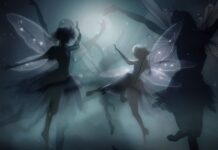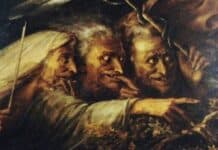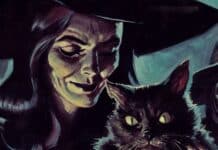AMY VAN DE CASTEELE takes a look back at the time when witches and fairies were anything but the fodder of children’s stories
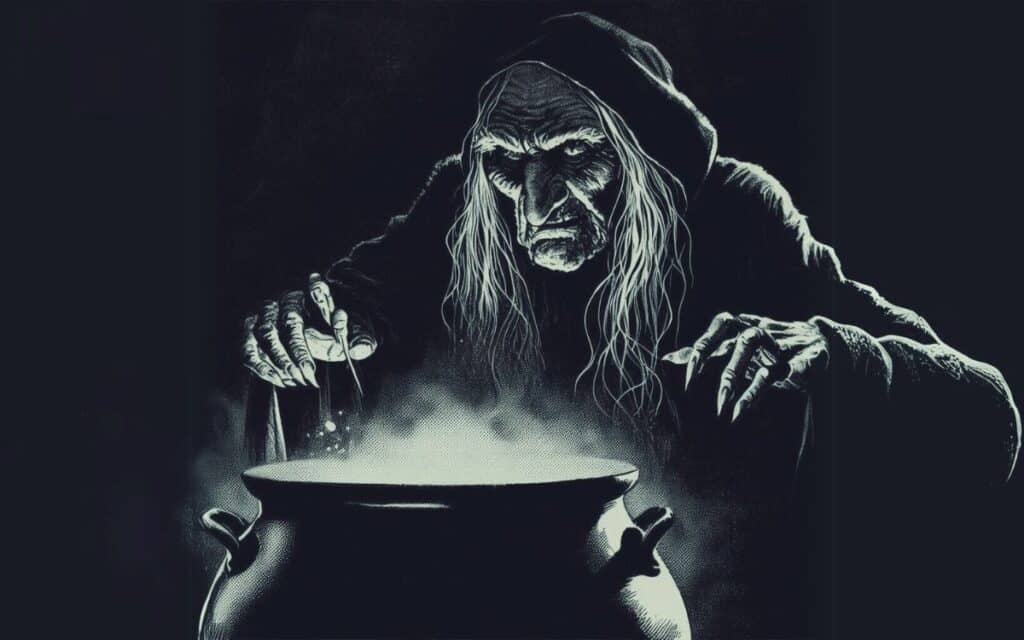
In the ‘enlightened’ 21st century, fairies and witches are popular figures in children’s books and movies and are also undergoing a renaissance of sorts in the realms of alternative religion and Mind/Body/Spirit literature. There are men and women who describe themselves as Hedge Witches, and who create fairy gardens in their backyards to welcome the Kindly Ones; there are books of fairy spells, and how-to-see fairy guides, and both witchcraft and fairy magic have been fused into a unique ‘Craft’ which takes some of its inspiration from the old Celtic ways.
In other words, these days fairies and witches are not seen as frightening or devilish, when they are thought of seriously at all, and many people are embracing the idea of fluttering nature spirits and a brand of magic which has nothing to do with the artificial glamour of the vapid 21st century cult of celebrity.
Death, Torture and Imprisonment
But go back in time four or five hundred years, and circumstances were dramatically (and fatally) different. In those days, to be dubbed a witch or to be thought of as someone who fraternizes with fairies could spell your death, or at the very least lead to torture and imprisonment. In the 16th and 17th centuries, witches were viewed as pawns of the Devil, as enemies of Christianity, purity and morality.
And fairies? They were almost as bad, being thought of as neither angelic nor demonic but hovering in an uncomfortable liminal state somewhere in the middle.
Jeremy Harte describes in his excellent book Explore Fairy Traditions how ‘many Scottish cunning-women had been questioned about their activities’ and how one of them, Alison Peirson, supposedly ‘had a friend among the fairies’ who taught her which herbs she could use to heal various illnesses. In fact a number of cunning-folk, both men and women, were reported to have gained their powers through fairy tutelage or even taking a fairy lover. One of the most famous examples of a witch who obtained her knowledge through the fairies (and was burned to death as a result of her, incredibly, voluntary confession) was Isobel Gowdie.
Her trial took place in Nairnshire in the 1660’s. In a remarkable outpouring, housewife Isobel described how she had watched the devil himself shape elf-arrow heads with his bare hands, with which she later killed several people, and how she would ride upon ‘wild-straws and corn-straws’ as though they were horses (a recurrent fairy motif); she also told how she had feasted with none other than the King and Queen of Faerie.
As Jeremy Harte records, approximately forty of the thousands of people tried for witchcraft in Scotland also spoke of the fairies when they were interrogated; but of all of them Isobel was the only one who admitted to having made a compact with the Devil. If that wasn’t enough, to thoroughly drive home the point that she was a witch, she described how she kept a broomstick handy to slip into her marital bed when she vanished during the night, and how her husband never knew the difference.
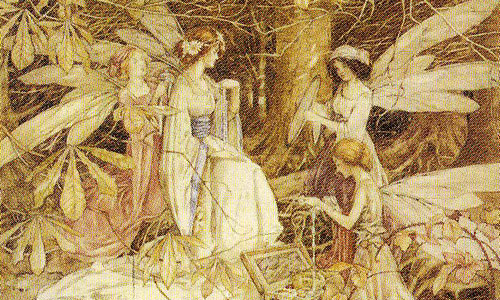
The Kindly Ones
No one can ever be sure of why Isobel Gowdie said what she did, but the unfortunate result was her death at the stake. While her tales of consorting with fairies would not have done her any favours, it was her admittance of a pact with the Devil that really sealed her fate. Though admittedly, talking to fairies in the Scotland of those times was hardly a safe pastime. The Scots viewed fairies in an even darker light than the Irish, for whom the Kindly Ones were a people to be feared but not necessarily mortal enemies in league with the Devil. Speaking of the difference between ‘traditions of the fairy host and the witches’ ride’, Harte sais that in ‘the demon-haunted imagination of Reformation Scotland, there were those who sought to annihilate these subtle distinctions […] all supernatural beliefs which lay outside the remit of the Kirk smelt of sulfur…’
Across the water, in Ireland, some witches managed to escape the death penalty, even though their powers were attributed to the fairies. Among them was a cunning-man named Fagan, from Galway, who declared that his knowledge was given to him by his sister, who had been stolen away by the fairies, but who managed to appear to him one day in the fields and instruct him on the healing powers of herbs. Meanwhile, in Myddfai, Wales, a family of doctors could trace their skill at healing back to their ancestor, who was supposedly a fairy woman who had arisen out of the lake one day, later abandoning her mortal children to return to the Otherworld.
Without even taking an in-depth look at the integrating worlds of fairies and witchcraft, it is easy to see why the two are associated. Both witches and fairies are reputed to have supernatural powers, which they have been documented as using for both good and evil. Both have been rumoured to be associated with the Devil (True Thomas’s Elf Queen may have originally intended him to be a tithe to Hell) and both are also associated with dancing, intoxication and overt sexuality (which these days is something of an allure but four hundred years ago was somewhat frowned upon, to put it mildly).
Fairies in the 21st Century
To this day, as I have already spoken of at the start of this article, witches and fairies remain interlinked, with new magical traditions being dedicated to interacting with ‘the fae’ as they are often called. A raft of books are available, telling you how to set up a fairy altar, how to make fairy offerings, how to find a fairy ally and how to acquire your very own shroud of fairy glamour.
This transformation in the perception of both witches and fairies is one of the clearest signs of how folklore and religious beliefs alter throughout time. In this case it may be reassuring, as modern-day witches and those who believe in fairies tend to have a deep-seated respect for the environment, for morality, and for humanity in general. Any associations with the Devil have fallen completely away, and though witches may be viewed with raised eyebrows, fairies are beloved by little girls across the world and magic is a word no longer synonymous with fire and brimstone.
AMY VAN DE CASTEELE is a freelance writer, devoted single mother and amateur “folklorist” of sorts who loves collecting tales of myth, legend and the supernatural from across the globe. She has spent most of her life overseas, in southern Africa, Thailand, Dubai and China and has gained all sorts of insights into these very rich cultures. Her most recent “supernatural” areas of interest are the Sidhe and Nordic folklore.




